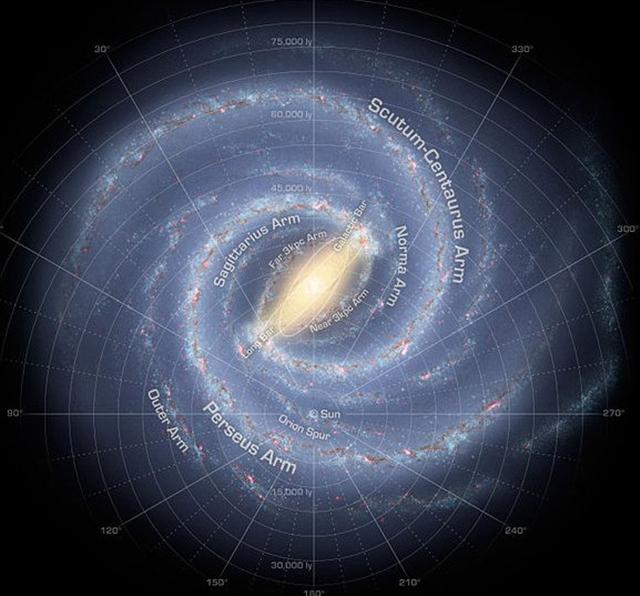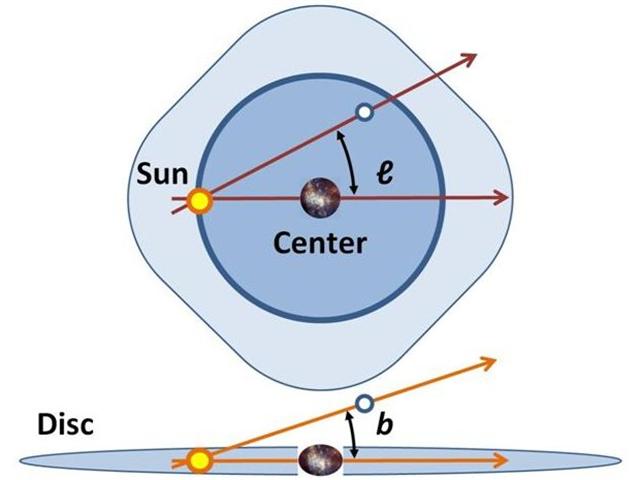|
1. The type of glyph in Ga5-15, where Kissin (a name for the whole constellation Coma Berenices) at present is rising heliacally, can be imagined as a kind of head-gear with bands of maro feathers (12 + 12 = 24) hanging down on each side:
The basic reason for the great interest of the ancients in Coma Berenices was probably its connection with the Milky Way:
A picture like this cannot be taken from Earth, instead the observer's view is edge-on and a coordinate system using longitude (l) and latitude (b) is used for defining positions:
"The galactic coordinates use the Sun as the origin. Galactic longitude (l) is measured with primary direction from the Sun to the center of the galaxy in the galactic plane, while the galactic latitude (b) measures the angle of the object above the galactic plane." (Wikipedia) The ancient view was not spatial but temporal. In the Golden Age Coma Berenices rose heliacally close to summer solstice (north of the equator). It could therefore have been associated with the 'death' of Spring. Today, a quarter of 26,000 years later, Coma Berenices is close to autumn equinox and marks the 'death' of Summer. At the end of September is its vero, 192 days beyond equinox. |



